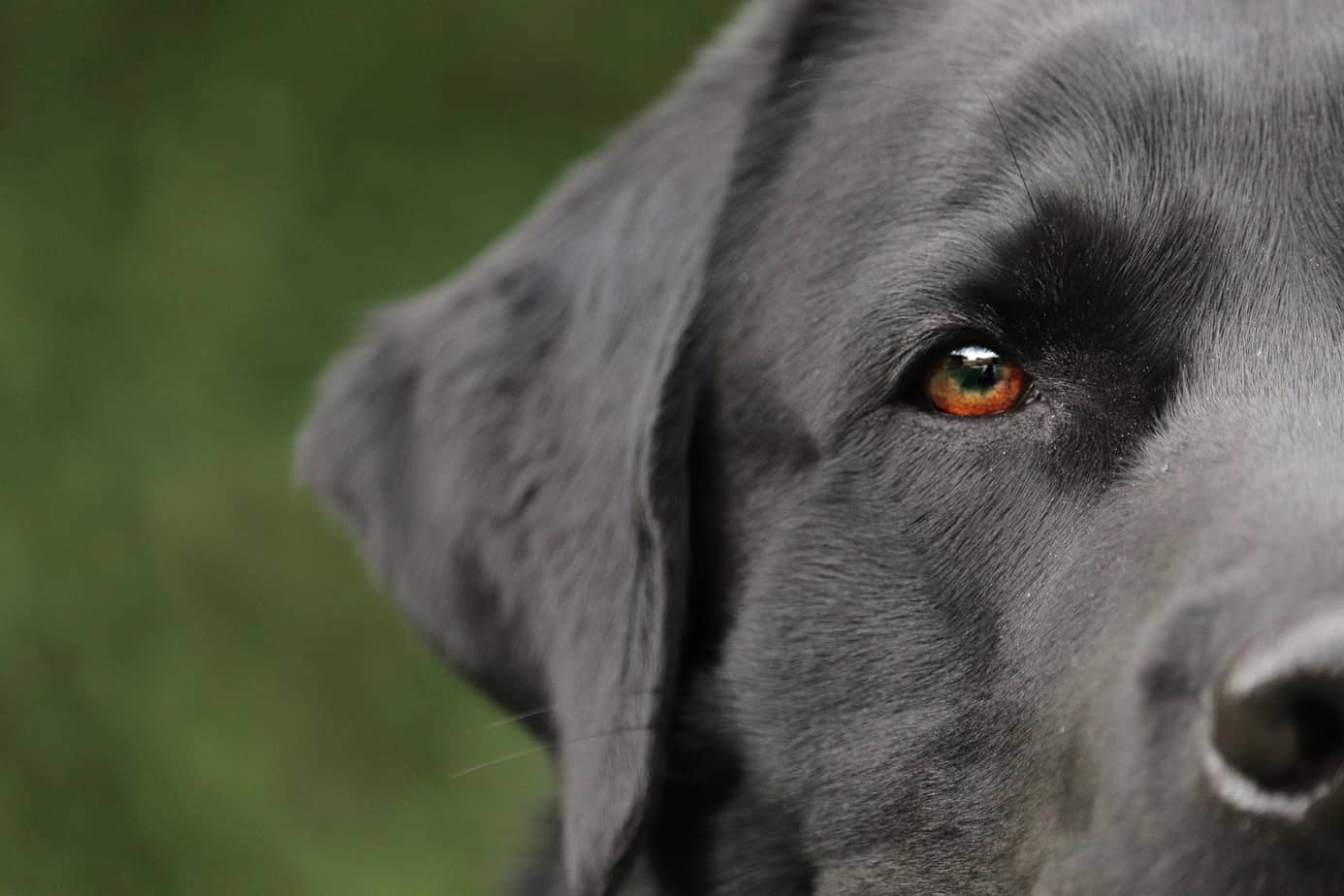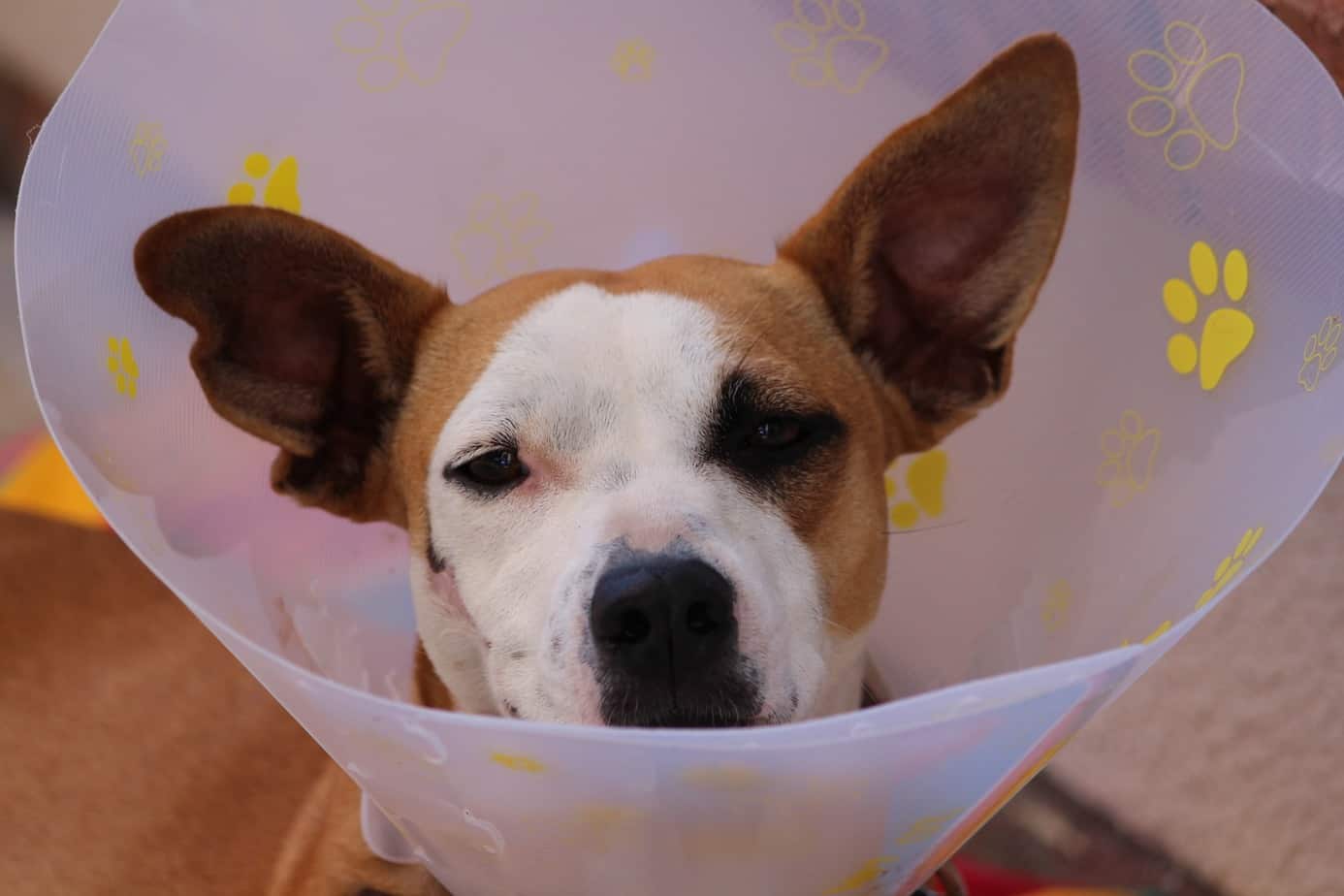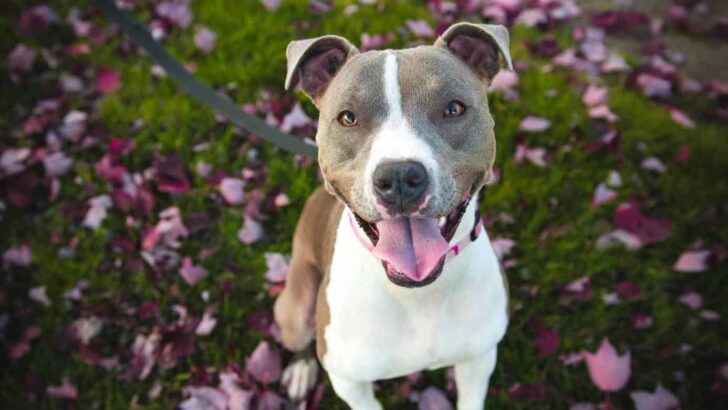- Nom Nom Dog Food Subscription Review - November 7, 2023
- 7 Best Dog Bed Ideas For Great Dane (DIY Options) - July 16, 2022
- Top 5 Rated Best Non-Prescription Diabetic Dog Food - July 15, 2022
If your dog seems to be paying more attention to their ears than usual then you might want to take a closer look. Dogs can be prone to irritations, inflammation, and other ear problems. Too much fungal growth can lead to a yeast infection in their ears. Here are some of the major signs of a dog ear yeast infection:
- Excessive scratching
- Moist inner ears
- Redness and inflammation
- Sores and crustiness.
- Trouble balancing or walking
- Funny eye movements
- Frequent tilting of the head
Fortunately, yeasty ears can be treated a lot of different ways and usually doesn’t lead to anything very serious as long as you treat the problem as soon as it is noticed. f the infection is still in the beginning stages, over-the-counter treatments & DIY/homemade remedies will clear it up. If your dog has been exhibiting symptoms for a while, it’s best to consult a vet ASAP. Persistent yeast infections in the ear can spread to the inner ear, and will require specialized care.
If you have a breed that is prone to ear infections, familiarize yourself with preventative maintenance and the signs of infection. Stock up on apple cider vinegar and a soft, non-abrasive towel for regular ear cleanings. A yeast infection in the ears is almost always a sign of yeast infections elsewhere, it’s just that ear irritation is usually the most easily observed. Keeping the ears clean is a good start, but to fully address the issue you need to fight the problem from within. If ear infections are a common occurrence, make sure that you’re feeding your pup a food that is free of potatoes, corn, wheat, and rice. You may even go a step further and supplement your dog’s diet with garlic or oregano, both of which contain antifungal properties that will help fight infection.
Dog Ear Yeast Infections or Symptom of Another Condition?

Although a lot of the time the yeast infection is the only thing going on, it is possible it may be the symptom of other health concerns that are going on with your pooch. Your veterinarian should let you know if yeast overgrowth in ears is a possible side effect. Here are a few conditions that yeast infections can point to, especially if your dog seems to be getting them often.
Allergies
Just like us people, dogs can be allergic to just about anything. Some breeds are more well known for having sensitive skin or allergies than others. Your veterinarian can help you determine if allergies are a problem for your dog and offer proper treatment or recommendations. A simple change in diet, the shampoo you are using, or their flea and tick medications and treatments, can make a big difference or completely eliminate the problem altogether.
Bacterial Infections
It is important to look your dog over and see if there are any other skin issues going on. Bacteria such as the types responsible for hot spots may be causing your pooch more trouble than you suspect. Anytime your dog is fighting more than one condition, they are more susceptible to other problems.
An Object in the Ear
Strangely enough, an object in the ear is not so uncommon in dogs. This can happen a variety of ways. They may be swimming and something may get into the ear canal. Wallowing around and playing can lead to the same thing. If your dog is around kids a lot then there might be a lot of smaller plastic toys like Legos or similar laying around. The object may be so small that you yourself cannot see it. It is advisable to always have your veterinarian remove objects since the ear is so sensitive and you do not want to risk damaging your dog’s ear canal or rupturing the ear drum during the removal process.
Weak Immune System
Dog’s with average to strong immune systems can fight off yeast overgrowth and bacterial infections more readily than some dogs. If your dog is older or has a known secondary condition, or seems to get sick more easily than other dogs then you may need to offer then a different diet and some supplements to get their immunity to a better level.
How Does an Ear Yeast Infection Develop?

A lot of pet parents wonder how a yeast infection even happens since their dog has floppy ears that protect the inner parts or erect ears where dirt and debris are apparent and cleaned frequently.
All dogs have ear canals that are shaped like an “L” so the canal goes down and then out. When a dog is going about their daily activities, dirt and debris can become trapped.
The cleaning products you use in the home can contribute as well as dust, mold, pollen, and any other allergen you can think of. Cigarette smoke is also a major culprit which is one reason to not smoke inside with your dog or even close to them outside.
Bathing your dog frequently can also lead to trapped water and debris such as hair and dirt can find its way into the ear canal. This can be even worse if you don’t make it a habit of thoroughly cleaning your dog’s ears after each bath. It’s very important to avoid getting water in the ear itself during bath times.
Breeds That Are Most Susceptible to Yeast Overgrowth
Unfortunately some pooches are born with a predisposition towards yeast issues. If your dog is a pure blood or mix of the following breeds then you need to pay extra attention for yeast overgrowth signs.
- Cocker Spaniels
- German Shepards
- West Highland White Terriers
- Poodles
- Basset Hounds
- Shar Peis
- American Bulldogs
- Doberman Pinchers
- English Bulldogs
- Labrador Retrievers
- American Pitbull Terriers
The breeds listed above that have a lot of folded skin like the Shar Pei or Basset Hound are most likely to have yeast infections that are on other areas of the body beyond the ear.
Causes & Precautions
Excessive Use of Antibiotics Can Lead to Yeast Overgrowth
It is important to only give dogs antibiotics when they really need them. A lot of conditions that require antibiotics can be avoided through a good healthcare routine, healthy diet, and paying enough attention to spot issues before they become more serious. Right after antibiotic use is a prime time for yeast to grow fast. This happens because antibiotics are made to kill to bacteria but they do not distinguish between good and bad bacteria, they just get rid of all of them they can. Feeding your dog foods that contain probiotics or giving them a probiotic supplement in a treat or on their dog food can help them recover the good bacteria and avoid yeast infections.
Is It Contagious?
Yeast infections are not contagious but if left untreated they can open a dog up to the possibility of more serious infections that are transferrable.
Spreading Infections Can Lead to More Serious Problems
While it is easy to treat a yeast infection that is spotted early on, they can spread to other parts of the ear. The outer ear leads to the ear drum. When the infection goes past the outer ear and into the middle ear it just keeps on until the inner ear is reached and that is where you get the most serious problems. The inner ear has a lot of influence on balance and coordination. If your dog has an infection in the inner ear then they may not be able to walk correctly or maneuver. Falling down is a serious symptom and if you have an older dog it can be even worse. Untreated an inner ear infection can even lead to permanent deafness.
Other Yeasty Areas
Yeast can cause trouble on other areas of your dog. Itching a lot when there is no sign of fleas or insects, crustiness, scabs, and other skin irritations can be caused by yeast. The only way to know for sure is to ask your veterinarian to take a look. You don’t want to be offering your dog treatment for the wrong condition while what is going on just gets worse.
Treatment

Typically, yeast infections are just diagnosed at your veterinarian. This is especially best if this is the first time your dog has experienced any type of ear irritation or distress. Your vet will look into your dog’s ear and check for sores, objects, etc. They will likely take a small scraping of skin cells and look at it under a microscope to verify the presence of yeast and then make an appropriate recommendation for treatment. If this is not the first time the condition has occurred, they may do other tests or examinations to determine the root cause.
Over-the-Counter at Home Treatments
If you are sure that your dog has yeasty ears and the condition is just causing itching, scratching, or light inflammation, there are at home treatments that are inexpensive and effective. These can be especially helpful at preventing issues that seem to be recurring or seasonal. Of course, these treatments should only be used for mild cases of yeast and ear irritations that have been caught early on. If your pet doesn’t seem to improve at all or the condition worsens then seek out the advice of your vet ASAP.
Curaseb
No products found.
Curaseb cleans and flushes the ears and deodorizes all at the same time. This formula contains Ketoconazole to kill fungus such as yeast in the ears of your dog. Tris-EDTA attacks cell walls so bacteria are stopped in their tracks. The treatment is made in the USA and claims to use veterinary strength and grade ingredients. For chronic ear issues, this is a good value and you have to love the cucumber melon scent it leaves behind rather than a medicinal smell like some treatments can.
EcoEars Dog Ear Infection Formula
No products found.
Vet Organics is a great company for eco and environmentally savvy dog parent’s. This all natural formula attacks even antibiotic resistant bacteria and provides anti fungal properties and protection. Within 2-3 days Vet Organics says you will see the gunk gone from your dog’s ears with ears restored to a healthy condition within 7-10 depending on initial severity and your dog’s natural ability to heal. Denatured Grain Alcohol, Organic Mullein Leaf Extract, Witch Hazel Extract, Rosemary Extract, Ionic Silver Solution, Boric Acid, Vegetable Glycerin, Tea Tree Oil, Polysorbate 20 (food grade) is the entire ingredient list.
Mister Ben’s Ear Tonic w/ Aloe for Dogs
No products found.
These ear drops have a lot of fans. The formula uses 5 main ingredients to provide soothing relief and healing. Aloe Vera is anti microbial, anti fungal, and it soothes and heals skin. Vinegar helps clean the ear and is also anti microbial, It effectively adjusts the pH of the ear and will also take care of any ear mite issues. Boric acid is a strong but safe astringent, disinfectant, and anti fungal ingredient. Providone-Iodine acts as a powerful disinfectant for inflamed ears. The iodine is released slowly to keep fungi, viruses, and bacteria from reestablishing and it also kills any that is already present. Mr. Ben’s donates $1 from every bottle purchased to Last Chance Animal Rescue so this is a product you can feel even better about using on your pooch!
Prevention
Regular Cleaning Of Ears
Cleaning your dog’s ears weekly if they are prone to yeast infections is highly recommended. This means choosing a mild yet effective ear cleaner product that is not hard for you to use. Make sure to read all the labels on any ear product thoroughly. Some products you can use together and some you cannot. Here are a few of Scout’s picks of ear cleaners for your pooch.
NEW All Natural Pet Ear Cleaner for Dogs and Cats | Eucalyptus & Aloe Vera Cleaning Treatment for Ear Mites Yeast Infection Fungus & Odor | Gentle Solution Cleanser for Ears – 1 Bottle 8oz (240ml)
No products found.
Bodhi Pet is a name you see a lot in our recommendations because they do such an outstanding job at keeping ingredients simple, natural, and of high quality. This soothing eucalyptus and aloe based formula helps eliminate the environment that mites, fungi, and more, like to live in. This is a great choice for using after bath time or anytime that your dog seems to have an ear irriation. Simply add 4-6 drops to their ear and massage in a circular motion. Wipe out with a cotton pad or swab ( be very careful when using swabs and do not ever force swab back into the ear!)
Choosing the Right Dog Food to Combat Yeast Infections
Dog foods, snacks, and people foods that are high in sugar can help yeast grow and thrive. If your dog is prone to yeasty ears then you may want to switch them to a high protein and grain free diet that avoids ingredients such as corn, wheat, and regular potatoes that have a high glycemic index value.
Sensitive skin formulations are a good place to start as well if you have a dog food brand you have a fondness for. Here are a few of Scout’s grain free picks. Remember that sweet potatoes are not high glycemic like their non-sweet russet friends.
“I and love and you” Naked Essentials Lamb & Bison Grain Free Dry Dog Food
No products found.
This formula gets a lot of points for being an amazing 30% protein. For dogs that like a bit of starch they use sweet potatoes. If your dog is used to corn being in their dog food, they will adapt pretty easily to the sweetness and texture that sweet potatoes adds to the mix. Flax seed and fish oils provide plenty of Omega 3 & 6 fatty acids for healthy coats and skin. Probiotics help your dog digest their food more easily and helps protect against the growth of fungi like yeast or harmful bacteria.
Whole Earth Farms Grain Free Recipe Dry Dog Food, Pork, Beef & Lamb
No products found.
Whole Earth Farms has a lot of different flavors that can help your dog out when it comes to yeast issues and more. Choose from Turkey and Duck, Pork & Beef & Lamb, Salmon & Whitefish, or Chicken & Turkey formulas. The larger bags are a better value but they do offer small bags for those of you with little canine companions. Dried blueberries provide antioxidant protection and adds more complexity to the flavor of this dog food. This is another company that is sure to add probiotics to all their formulas so your dog gets that benefit in their every day kibble!
Infection Risks & How to Fight Them
Summer Time and High Humidity Conditions
Hot and moist weather is a prime time for a dog to develop a yeast infection. Pay close attention to their ears during this time with a weekly check. Dogs that swim a lot are particularly susceptible so be aware of how much time your dog is spending swimming around. If you take your dog on vacation or trips a lot in the summer be aware of the differences in heat and humidity from the place they normally call home.
Making Your Own Dog Ear Yeast Infection Remedies
There are some natural remedies that you can compound yourself at home for minor ear issues. Here are some things that can help your dog naturally get over or prevent yeast infections.
Apple Cider Vinegar
Mix one part apple cider vinegar with two parts water in a small spray bottle. Use after regular ear cleaning by spritzing it on and in the ear. Use a cotton ball or disposable cotton pad to wipe excess off and dry ears. You can do this twice per day until the problem is resolved.
Witch Hazel & Apple Cider Vinegar
This powerful combination provides an astringent effect with the pH correcting power of apple cider vinegar. Witch Hazel also has a pH balancing effect but it also soothes irritated skin. Use a cotton ball to wipe the solution into your dog’s ears after cleaning.
Coconut Oil & Tea Tree Oil
Combine some liquid coconut oil with a few drops of tea tree oil and put 4-6 drops in each ear. Massage the ear gently and then wipe up any debris with a cotton ball. Be sure to not use this formula so often that it breaks down the natural wax in your dog’s ear. Once a week is fine or once a day until the problem goes away or another treatment is started.
Boric Acid
This pH adjusting all natural solution is inexpensive and very effective at making ears inhospitable to fungi and bacteria. To use this remedy combine boric acid powder with enough preboiled water to make a paste that is an easy consistancy to apply to your dog’s ears. Use this daily until the condition goes away.
How Do I Keep My Dog From Scratching Ears During Treatment?
This is a dilemma a lot of pet parents go through. Treatments need time to work and you don’t want your dog to scratch off their hair or cause lesions on their ears that can lead to secondary infections. An Elizabethan Collar or E Collar can help your dog get through the first few days of treatment. These collars are available in cushy styles that are much more comfortable than the classic plastic ones you may be used to seeing. Here is an example of a cone style collar that will prevent scratching and rubbing of the ears.
The Comfy Cone Pet Recovery Collar by All Four Paws, Medium, Black
No products found.
This comfy cone style collar is padded for the comfort of your dog so they can sleep a lot more comfortably. There is no danger of plastic scratching up furniture either. This is a good thing to have on hand for all types of dog care needs.
The Best Defense Is a Good Offense
Dogs don’t necessarily like to be groomed or cleaned but as a pet parent, you have to take on the job or risk your pet’s health. Good ear hygiene is one of the aspects of grooming most often overlooked. Scout hopes that this guide has offered you solutions that fit into your lifestyle. Ear issues are one of the things that respond well to a lot of natural remedies if caught early, so if your dog is prone to yeast infections of the ear, the smartest thing you can do is to arm yourself with a bottle of pure apple cider vinegar and learn the proper technique for keeping your dog’s ears clean.
Even if your dog is not a breed with a propensity for ear infections, it’s still good to give him regular, gentle ear cleanings. If routine care doesn’t seem to be addressing what you believe are signs of a fungal (yeast) infection of the ear, make an appointment to speak to your vet immediately. In the interim, carefully evaluate your dog’s diet. Eliminate the “filler” carbs common to cheap dog foods, like corn, wheat, and potatoes, and consider supplementing your dog’s diet with garlic. If yeast infections occur too frequently or remain untreated, your dog can develop a yeast allergy and require an even greater level of care. That’s why it’s so important to address fungal infections quickly and aggressively.
Continue reading:
Best Dog Food For Ear Infections
Itchy Ear Solutions: Identifying & Fighting Dog Ear Yeast (Fungal) Infections




